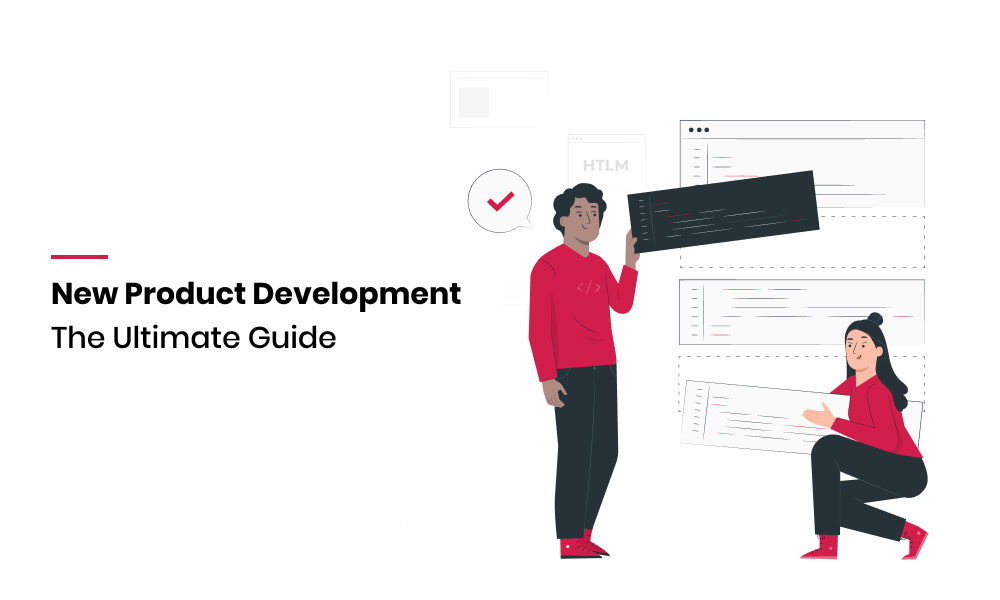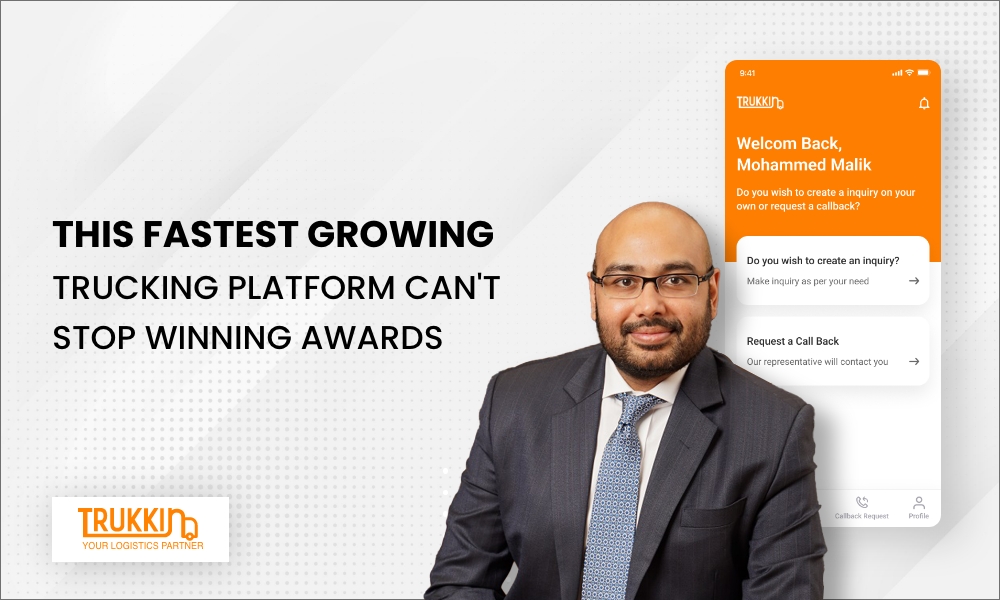Have you ever been caught in a pickle with products developed by IT service providers or felt let down and helpless with service teams at least a day away? We sure have. Businesses often face problems with products developed by IT service providers. These problems can result in downtime or significant loss of business to these companies.
However, there is still hope! Many enterprise-grade providers now offer a solution to these problems by offering Software as a Service or Products as a Service. With their requirements being as little configuration information and a web browser, these cloud-based, low-to-medium cost solutions can help you get up and running in seconds.
See also:
Read on to learn more about Products as a Service or Software as a Service and how these solutions can help you achieve your business goals.
So are you ready, pumped up and excited to read this article full of information and golden nuggets? Here we go!
The IT industry today is going through a revolution. A revolution that has begun to disrupt the traditional billing model of most IT companies and has taken the forefront when it comes to IT-enabled solutions – the Service model.
What are the problems which every business/enterprise faces while getting the product done from IT service providers?
Traditionally, IT companies would ideate and create a niche product that they would offer to their customers. These products were usually offered as a perpetual license, with an option to upgrade to newer versions as they were released. Enterprise products also include product maintenance plans that would offer customer service and a free upgrade to the next version during the calendar year. Proprietary file formats, prohibitive licensing costs and problems porting to a new vendor kept customers hanging on to the same service providers for years, and sometimes even decades to ensure that their overall cost of ownership was lowered to ensure the viability of using the product.
The good part for customers was that they were used to the services of the provider and that the product was licensed to them perpetually, ensuring that even if they did not upgrade, they could still use the product as long as it was supported on the hardware they owned. The downside of this approach was major.
As operating systems and underlying platforms were enhanced, improving employee productivity and of the company as a whole, sticking to an older version of a software proved to be problematic as this software would either not run or install, or have a magnitude of problems on newer machines and operating systems due to compatibility issues. This would impose a high procurement cost on the customer as they would have to upgrade to the latest version of the software that supported the new architecture, or move to a different provider altogether, which would mean repeating the same cycle. Purchasing maintenance plans were also not a cost-effective solution as they failed to deliver value to the end user.
So what is the solution to these problems and how it is benefiting the small businesses and enterprises?
An intermediary solution to this problem was to offer the customer the product as a subscription, also considered as a Product as a Service. This ensured that the customer would be able to use the software for a fixed monthly fee, but always had access to the latest version at all times, as long as they paid the subscription fee and downloaded and installed the newest version available. This posed a high IT overhead for companies that were using software that needed to be physically installed, costing many man-hours of work for the uninstallation and reinstallation of this software.
Another major problem faced by smaller companies was integration. Many enterprise-grade software solutions had complex requirements that ranged from high-end servers to complex database systems that required a dedicated IT and Database administration team to manage, creating an overhead that cost a lot. Multiple instances of these had similar requirements, causing costs to spiral. Smaller companies that could not afford such solutions were forced to either run their processes manually or to outsource them to a service provider, giving rise to the large outsourcing market, but at the cost of making their data available to a third-party.
The solution, however, lay in the reduction of bandwidth costs and the availability of the internet to nearly every user, along with modern hand-held devices that rival entry-level computers in processing power. The advent of service-based platforms and solutions have opened up new avenues for smaller and medium-sized companies alike. Software-as-a-service(SaaS) or products-as-a-service have opened up doors to solutions that were originally considered high-cost and high-maintenance.
From Enterprise Resource Planning (ERP) solutions to Support systems, ticketing systems, and Productivity Suites, nearly every software today has a cloud-based offering.
The SaaS market has seen exponential growth year upon year. With a CAGR of close to 19% and a huge untapped potential, the SaaS or the product as a service market is set to dominate the technology services arena.
Difference between On-premise product/software and Software as a Service:
What are the advantages of a Software as a Service (SaaS) or a Product as a Service?
Offering a product as a service has many key advantages!
Scalability:
- Companies grow over time, even if they start small. These companies are now able to pay a fixed monthly or annual licensing fee for the services that they use, and not the extras that come with it, reducing upfront costs further.
- With the ability to buy licenses as they grow with no additional costs except the per-user or per-instance monthly fee, it is a no-brainer for startups and companies with dynamic team sizes.
- This, of course, has the added advantage of not requiring increasing hardware and dedicated teams to manage the system, reducing overheads that cost over and above the cost of the software.
Upgrades:
- Upgrading software that requires high availability can be a pain. A product-as-a service offering mitigates any issues related to upgrading versions by simply offering a new version of the software that is hosted.
- As there is no downtime and the responsibility to maintain, upgrade and scale the system lies with the provider, all users need to do is access the software using a web browser or a mobile app, reducing the software’s footprint and enhancing availability.
Security:
- Most products offered as a service today are secured using the highest standards available, with no compromise.
- A hosted solution also has the benefit of the data center managing the systems and their security, acting as a huge benefit to the end user.
What are the advantages of a standalone Software?
A standalone product that is installed at a customer’s premise is not all bad news. Not everything is for everyone. Customers with complex requirements and security or regulatory limitations need software that is installed on-premise. These needs cannot be fulfilled by SaaS offerings as of now unless offered by a specialized software vendor.
Some organizations also require software to run in an intranet, with users not having access to the internet. For such organizations, it is impossible to use a product as a service.
For who the standalone Product and Product as a service is a better solution?
Not everyone can benefit from all types of software. Although the Product as a service market has disrupted the traditional software arena, there is still a niche market that deals with organizations that have extremely complex requirements that cannot be fulfilled by mass-market hosted solutions. For those customers, having a customized product is the only solution. For the rest, with requirements that require some amount of customization but with no specific regulatory limitations, a Product as a service is probably the best thing since sliced bread. With nearly zero setup cost, a very low monthly fee, products as a service are the way to go for most organizations, regardless of size.







Well I definitely liked reading it. This tip offered by you is very helpful for proper planning.
Very interesting topic, regards for putting up.
A formidable share, I just given this onto a colleague who was doing a little analysis on this. And he in fact bought me breakfast as a result of I found it for him.. smile. So let me reword that: Thnx for the deal with! However yeah Thnkx for spending the time to discuss this, I really feel strongly about it and love studying more on this topic. If possible, as you develop into expertise, would you thoughts updating your weblog with more particulars? It is extremely useful for me. Large thumb up for this blog post!
I am often to blogging and i really appreciate your content. The article has really peaks my interest. I am going to bookmark your site and keep checking for new information.
Hi, I think your site might be having browser compatibility issues. When I look at your website in Safari, it looks fine but when opening in Internet Explorer, it has some overlapping. I just wanted to give you a quick heads up! Other then that, fantastic blog!
zyrtec canada over the counter generic name for allergy pills best generic allergy pills
Hi, I think your site might be having browser compatibility issues. When I look at your website in Safari, it looks fine but when opening in Internet Explorer, it has some overlapping. I just wanted to give you a quick heads up! Other then that, fantastic blog!
I keep listening to the news update lecture about getting boundless online grant applications so I have been looking around for the top site to get one. Could you tell me please, where could i find some?
sleeping pills online order order melatonin 3mg
I’ve learn a few excellent stuff here. Definitely worth bookmarking for revisiting. I surprise how much attempt you set to create such a wonderful informative site.
Hello there, just became aware of your blog through Google, and found that it is really informative. I am gonna watch out for brussels. I will be grateful if you continue this in future. Lots of people will be benefited from your writing. Cheers!
deltasone 5mg canada prednisone usa
reduce acid in stomach medication order glucophage 500mg generic
zinplex pills side effects generic prednisone 40mg hormonal acne treatment near me
allergy pills prescribed by doctors brand allegra top rated pill for itching
pain killer easy on stomach duricef 250mg drug
accutane 10mg canada absorica order online isotretinoin 20mg ca
I wanted to thank you for this great read!! I definitely enjoying every little bit of it I have you bookmarked to check out new stuff you post…
I was recommended this web site by my cousin. I’m not sure whether this post is written by him as nobody else know such detailed about my difficulty. You are incredible! Thanks!
Dead pent content, Really enjoyed examining.
buy sleeping tablets online usa provigil without prescription
amoxil 500mg for sale buy amoxicillin online cheap amoxicillin uk
what is the strongest sleeping pill buy modafinil 200mg without prescription
oral azithromycin 250mg buy azithromycin pill zithromax online
gabapentin cost buy neurontin 600mg for sale
purchase azipro azipro 500mg us order azithromycin 500mg
furosemide 100mg cost buy lasix 40mg
order omnacortil 40mg online cheap order prednisolone 40mg online order prednisolone 5mg generic
cheap amoxicillin online generic amoxil 1000mg amoxicillin medication
order doxycycline online vibra-tabs brand
buy ventolin inhalator online cheap buy ventolin 2mg without prescription albuterol without prescription
buy clavulanate online cheap how to get augmentin without a prescription
synthroid 150mcg cost order levothyroxine online purchase levothroid sale
buy vardenafil generic buy levitra 10mg pills
clomid 50mg canada buy clomid 50mg online cheap clomid 50mg pills
tizanidine 2mg over the counter purchase tizanidine sale tizanidine 2mg drug
purchase rybelsus online buy rybelsus 14mg generic buy rybelsus 14mg pill
deltasone 5mg cheap deltasone 10mg uk buy deltasone 20mg pills
where to buy rybelsus without a prescription rybelsus 14 mg oral semaglutide 14mg pill
buy isotretinoin 40mg generic buy isotretinoin 40mg for sale order generic isotretinoin
amoxil order online amoxil 1000mg canada buy amoxil 250mg online
order albuterol order albuterol generic purchase ventolin online
buy augmentin 1000mg sale order augmentin 625mg without prescription augmentin 1000mg canada
order zithromax 250mg pills buy azithromycin sale buy zithromax 500mg
levothyroxine generic cheap levothroid pill levoxyl pills
order prednisolone 40mg pills generic prednisolone 40mg omnacortil ca
order gabapentin 800mg pill buy neurontin no prescription brand neurontin
serophene over the counter order clomiphene 50mg online cheap serophene pills
lasix 40mg us furosemide 40mg ca buy lasix medication
sildenafil citrate 50 mg viagra over the counter viagra next day
doxycycline for sale acticlate over the counter doxycycline 200mg tablet
semaglutide 14 mg us buy generic semaglutide order rybelsus 14mg without prescription
online blackjack with real money roulette online free money games
buy vardenafil pills buy levitra 10mg for sale buy levitra paypal
order generic lyrica lyrica 150mg drug cost lyrica
I really enjoy examining on this website , it holds excellent content.
buy generic plaquenil 200mg hydroxychloroquine 400mg generic order hydroxychloroquine online cheap
order aristocort 4mg pill buy aristocort medication buy triamcinolone generic
cialis 20mg oral buy cialis 10mg without prescription tadalafil 40mg over the counter
clarinex 5mg sale purchase clarinex sale purchase desloratadine sale
cenforce 50mg drug buy cenforce medication buy cenforce for sale
claritin online buy loratadine 10mg sale purchase claritin generic
aralen 250mg cost aralen uk chloroquine 250mg sale
cialis canadian pharmacy’s cheap viagra online canada pharmacy
northwestpharmacy.com [url=http://canadianphrmacy23.com/]cialis pharmacy rx one[/url]
order dapoxetine 90mg online buy priligy 90mg pill misoprostol pills
buy glycomet for sale order glucophage for sale glucophage order online
glucophage 1000mg for sale buy glycomet 1000mg sale buy metformin 1000mg online
xenical 120mg oral xenical over the counter diltiazem 180mg cheap
atorvastatin 40mg cheap buy lipitor pill cheap atorvastatin 10mg
acyclovir 800mg cost buy zyloprim 300mg for sale purchase zyloprim pills
cheap amlodipine 10mg buy norvasc generic order norvasc 10mg without prescription
I have to voice my respect for your generosity for men who must have help on in this concept. Your very own commitment to getting the solution around had been quite important and have consistently helped others just like me to realize their objectives. Your amazing helpful guidelines entails a great deal to me and a whole lot more to my office colleagues. Thank you; from all of us.
buy rosuvastatin rosuvastatin 10mg oral ezetimibe generic
prinivil over the counter zestril us buy prinivil online cheap
purchase domperidone online domperidone 10mg brand buy sumycin 500mg online
prilosec 20mg price prilosec 10mg cost prilosec 20mg over the counter
cialis in usa pharmacy cvs pharmacy
cialis from usa pharmacy [url=http://canadianphrmacy23.com/]advice[/url]
purchase cyclobenzaprine without prescription buy cyclobenzaprine 15mg for sale buy baclofen cheap
metoprolol 50mg for sale buy generic metoprolol 50mg buy generic metoprolol over the counter
ketorolac uk toradol 10mg canada colchicine 0.5mg for sale
tenormin 50mg cost buy atenolol 100mg online order atenolol 50mg
buy medrol depo-medrol tablet methylprednisolone 8mg without a doctor prescription
buy generic inderal clopidogrel 150mg brand buy plavix
how to write an about me essay write my thesis paper writing online
methotrexate where to buy methotrexate buy online medex brand
order meloxicam 7.5mg pill meloxicam oral celebrex 200mg pills
purchase metoclopramide pills buy reglan 20mg for sale cost hyzaar
order esomeprazole 20mg for sale buy esomeprazole no prescription topiramate 200mg pill
buy flomax 0.2mg generic buy tamsulosin 0.2mg generic buy celebrex for sale
Everyone loves what you guys tend to be up too. This sort of clever work and coverage! Keep up the superb works guys I’ve added you guys to blogroll.
order ondansetron 8mg generic zofran sale purchase spironolactone
imitrex price order sumatriptan 25mg pills levofloxacin canada
I gotta bookmark this website it seems very useful invaluable
how to buy dutasteride zantac price buy zantac for sale
generic zocor buy simvastatin online cheap valtrex cheap
where to buy acillin without a prescription buy generic penicillin over the counter purchase amoxicillin generic
order proscar 1mg without prescription order diflucan for sale purchase diflucan online cheap
buy cipro online – brand cipro buy augmentin online
baycip online order – myambutol 600mg ca augmentin uk
metronidazole 400mg usa – buy cefaclor generic azithromycin pills
order ciplox 500 mg generic – buy generic ciplox 500mg buy erythromycin 500mg pills
valacyclovir pills – purchase valacyclovir generic purchase acyclovir pills
buy ivermectin 3mg online – axetil without prescription oral sumycin 500mg
order metronidazole – purchase amoxil online azithromycin online order
order ampicillin generic amoxicillin brand amoxicillin pills
buy furosemide for sale diuretic – atacand 8mg usa oral captopril 25 mg
buy glycomet 1000mg – ciprofloxacin 500mg tablet lincomycin 500mg ca
buy cheap pill generic zidovudine – zyloprim 100mg generic
I have fun with, result in I found just what I used to be taking a look for. You’ve ended my 4 day lengthy hunt! God Bless you man. Have a nice day. Bye
Hello! This is my first visit to your blog! We are a collection of volunteers and starting a new initiative in a community in the same niche. Your blog provided us beneficial information to work on. You have done a extraordinary job!
clozaril 100mg us – buy accupril generic oral pepcid 40mg
buy seroquel pills – buy sertraline 50mg without prescription eskalith over the counter
hydroxyzine 10mg cheap – order escitalopram 10mg online order endep generic
buy amoxil generic – order ceftin 500mg without prescription baycip price
amoxiclav tablet – buy zyvox 600mg cipro 1000mg generic
I regard something really interesting about your blog so I saved to my bookmarks.
Somebody essentially help to make seriously articles I would state. This is the first time I frequented your web page and thus far? I surprised with the research you made to make this particular publish incredible. Great job!
Deference to post author, some wonderful entropy.
cleocin cheap – oral chloromycetin cheap chloramphenicol sale
What Is Puravive? The Puravive weight loss aid is formulated using eight clinically proven natural ingredients.
purchase zithromax for sale – brand sumycin 500mg ciplox 500mg price
buy albuterol inhaler – buy seroflo generic purchase theophylline pills
stromectol tablets – cost ivermectin where to buy cefaclor without a prescription
Thank you a bunch for sharing this with all folks you really understand what you are talking about! Bookmarked. Kindly also seek advice from my site =). We will have a link change agreement among us!
purchase desloratadine – how to get flixotide without a prescription buy generic ventolin 2mg
Hello.This article was extremely fascinating, especially since I was searching for thoughts on this issue last Wednesday.
buy methylprednisolone pill – astelin oral astelin 10 ml over the counter
Hello. magnificent job. I did not anticipate this. This is a impressive story. Thanks!
glyburide 5mg pill – buy cheap actos order forxiga generic
Fantastic blog! Do you have any suggestions for aspiring writers? I’m hoping to start my own blog soon but I’m a little lost on everything. Would you advise starting with a free platform like WordPress or go for a paid option? There are so many choices out there that I’m totally confused .. Any tips? Kudos!
Well I sincerely liked reading it. This article provided by you is very useful for proper planning.
Aw, this was a really nice post. In thought I want to put in writing like this moreover – taking time and actual effort to make an excellent article… however what can I say… I procrastinate alot and under no circumstances seem to get something done.
You made some good points there. I did a search on the subject matter and found nearly all people will go along with with your blog.
very nice publish, i certainly love this web site, carry on it
Puravive is a weight loss supplement that targets the root cause of weight gain issues in men and women.
brand prandin 1mg – repaglinide online order empagliflozin 10mg cheap
I like the efforts you have put in this, thank you for all the great posts.
PBN sites
We’ll create a web of private blog network sites!
Merits of our self-owned blog network:
We execute everything SO THAT GOOGLE does not comprehend that this A private blog network!!!
1- We acquire domains from distinct registrars
2- The main site is hosted on a VPS server (Virtual Private Server is rapid hosting)
3- Additional sites are on separate hostings
4- We assign a unique Google profile to each site with verification in Google Search Console.
5- We create websites on WP, we do not utilize plugins with assistance from which malware penetrate and through which pages on your websites are produced.
6- We refrain from repeat templates and utilise only unique text and pictures
We refrain from work with website design; the client, if desired, can then edit the websites to suit his wishes